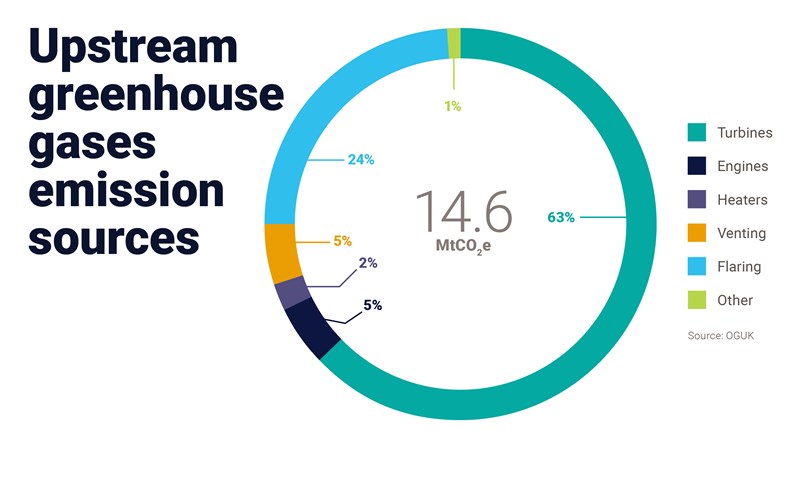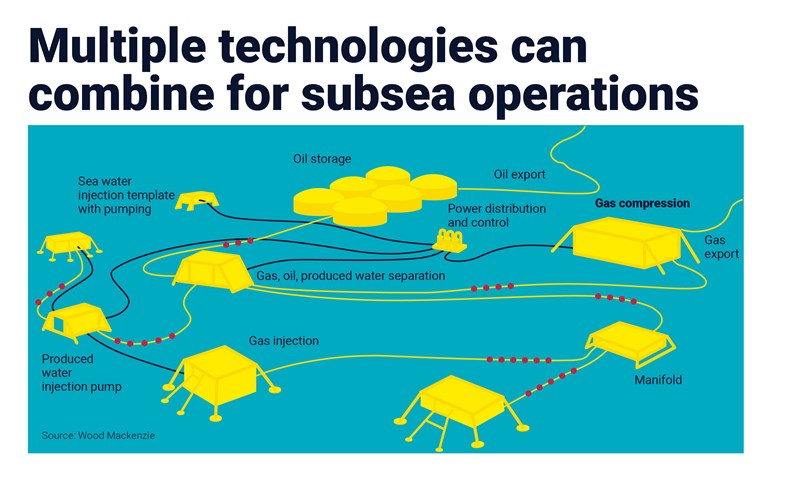Is net zero oil and gas production possible?
Innovation, collaboration and the technology path to a carbon-neutral North Sea
2 minute read
Malcolm Forbes-Cable
Vice President, Upstream and Carbon Management Consulting

Malcolm Forbes-Cable
Vice President, Upstream and Carbon Management Consulting
Malcolm is an expert in strategy development, transaction support and the energy transition.
Latest articles by Malcolm
-
The Edge
No country for oil men (and women)
-
Opinion
The Norwegian emissions dilemma
-
Opinion
The case for developing UK's oil and gas resources: Rosebank and Cambo fields
-
Opinion
Scotland the brave: a Firth of Forth net zero hub for COP26?
-
Opinion
A £2.5 trillion transformation: the economic impact of a net-zero North Sea
-
Opinion
Is net zero oil and gas production possible?
The UK’s offshore oil and gas industry has committed to cutting operational emissions in half by 2030 and achieving net zero production by 2050. Operators have already taken significant steps on the path to decarbonisation – but achieving these goals will take leaps forward in technology, policy and investment.
This is the fourth of our five-part series exploring the Wood Mackenzie/OGTC report Closing the Gap: Technology for a Net Zero North Sea. In this article, we focus on how the oil and gas industry can balance its efforts to sustain oil and gas production against growing pressure to decarbonise. Fill in the form to download the chapter on oil and gas and the technology roadmap to 2050. Or read on for a summary of key themes.
Where does oil and gas fit in to a net-zero North Sea?
The UK Continental Shelf (UKCS) has been a bedrock of the UK economy for half a century. More than 45 billion barrels of oil equivalent (boe) have been produced from the region to date, contributing more than £350 billion in tax revenue. And we estimate that 6.8 billion boe remain, under current cost and pricing assumptions.
So while there will be a natural depletion of the oil and gas industry over time – offset by growth in offshore renewables, hydrogen and CCUS – it still has a key role to play as the energy ecosystem evolves.
Energy mix: sources of all energy usage, includes electricity generation, transport, residential, commercial and agriculture (RCA), industry and losses. Power mix: sources of electricity generation.
Whilst oil and gas dominates the UK’s energy mix production operations are responsible for around 3% of UK greenhouse gas emissions. The industry has reduced its carbon intensity by 15% since 2013, thanks to efforts to upgrade and optimise operations through technologies such as digital optimisation and predictive analytics. Sustained effort on operational efficiencies is vital; however, this needs to be done in parallel with more fundamental changes to offshore facilities and operations.
So, how will the industry deliver on its net zero commitments? And can North Sea operators show the world a path to net zero oil and gas production? In our view, there are four areas where attention – and investment – must focus:
- platform electrification
- mitigation of flaring and venting
- mitigation of methane leaks
- subsea systems.
What’s powering the platforms?
By far the biggest impact will come from tackling the power source for offshore installations. Three quarters of CO2 offshore comes from combustion equipment that either provides platforms with electricity, or drives mechanical loads, such as compressors.
Electrification will be the key: taking low-carbon electricity from renewables, replacing gas turbines with electric motors, or switching to alternative fuels such as hydrogen or ammonia in gas turbines.
Of course, connecting platforms to onshore power sources is a challenge for much of the UKCS. Subsea cabling costs between £1 million and £2 million per kilometre and many platforms are more than 200 kilometres from shore. To justify such as large infrastructure outlay, new platforms are generally considered more suitable for electrification – although other factors, such as the overall power consumption, types of load and platform size also have an impact. Electrification does make a material impact on emissions but it must be noted will only be viable if the savings in operating costs and increased production compensate for the required investment.
Several electrification initiatives, focusing on onshore power are either underway or in the planning phase. More advanced electrification projects using offshore wind power can make substantial cuts to capital expenses. These will need greater industry collaboration to establish offshore grids.
What are the benefits and challenges of different electrification options? Fill in the form to download the chapter in full.
Changing habits on flaring and venting
Just over a quarter of the CO2 equivalent emissions from UK upstream production comes from two routine offshore practices: flaring and venting. Venting is mostly the result of an emergency pressure release, while flaring is the most economical – but carbon-intensive – means of disposing of low-value associated natural gas.
In this area, policy, rather than technology, is likely to lead the way and Norway provides a good working example of this approach. It introduced a total ban on non-emergency flaring in 1971, requiring producers to present gas utilisation plans before developing fields, and setting up a carbon tax and trading scheme. In the UK the reduction of flaring and venting consents is seen as a key means of managing down related emissions.
Not just CO2 – mitigating methane is even more urgent
Methane is estimated to have a global warming potential 28 times higher than CO2 over 100 years. Leaks from pipelines, compressor stations, storage tanks and other parts of the process mean that oil and gas operations alone accounted for 82 million tonnes of methane in 2019.
Leak detection and repair programmes for pipelines and storage tanks are already common practice for operators. The next step requires faster and more accurate leak-detection technology. Internal and external sensor systems installed in pipelines or integrated into remotely operated underwater vehicles (ROVs) and unmanned aerial vehicles (UAVs), are much more effective than relying on human detection methods.
As with many aspects of working offshore, the harsh environmental conditions present a challenge. Rolling out detection systems might be more difficult, but innovations, such as dynamic modelling and fibre-optic leak detection could provide solutions – even though they are in the early stages due to high costs.
Subsea – the final frontier
Subsea production systems are more energy efficient than fixed platforms or floating production, storage and offloading units (FPSOs). The UKCS has led the way in subsea innovation since the 1960s and now has an opportunity to tap underexploited small pools and unlock low-carbon production of precious – and otherwise expensive – resources.
The ‘final frontier’ of technology development for subsea developments is creating standalone subsea factories. Electrically powered operations such as single and multi-phase boosting, gas compression, gas-to-liquid or liquid-to-liquid separation, and well as water re-injection have a high decarbonisation potential.
True, the technology has still to demonstrate long-term reliability and comes with a high price tag, but there are no obvious innovation gaps to fill. Collaborations between operators including Equinor, BP, Total and Shell and technology developers like Aker Solutions, MAN, TechnipFMC, One Subsea, ABB and Siemens are likely to result in more robust designs that could be commercial in the mid-term. Find out more in the full report – fill in the form for your copy.
The path to net zero oil and gas production
Sustained effort is needed to meet decarbonisation targets. The implementation of revolutionary solutions has been hampered by the overall maturity of the basin and limited availability of capital due to low oil prices. Some solutions may have to be set aside due to high technology hurdles, while others will need government support or industry collaboration.
Focused, strategic investment will be vital to ensure the oil and gas industry plays its role in the evolution of a decarbonised, integrated energy system on the UKCS.
Find out more about the emission reduction technologies required on the path to 2050. Read the oil and gas chapter of our report, Closing the Gap: Technology for a Net Zero North Sea. This includes:
- Emerging solutions, accelerators and enablers
- Challenges on the path to 2050
- Speculative technologies for oil and gas
Fill in the form at the top of the page for your complimentary copy.










